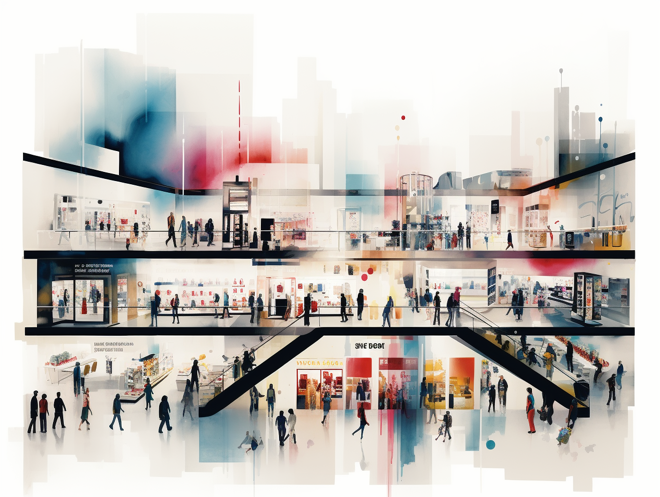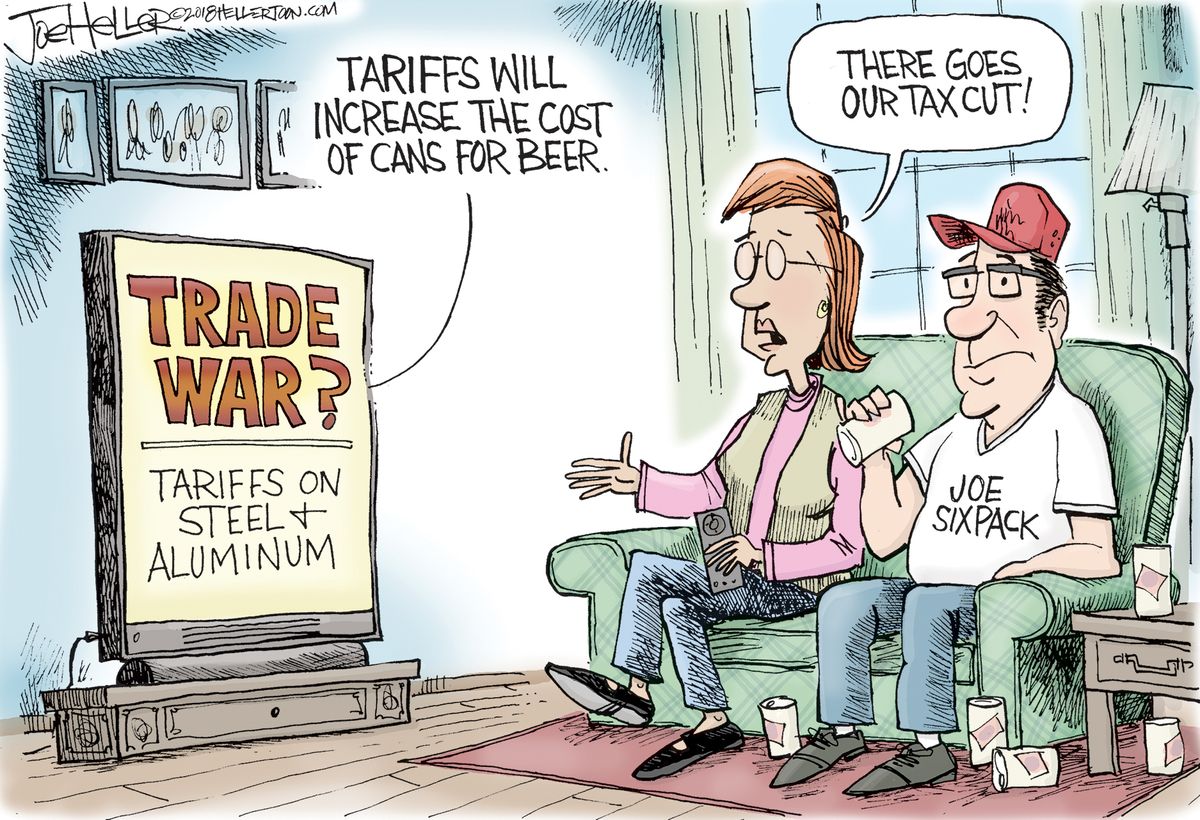Weaker Spending And Tariffs Contribute To 0.2% U.S. Economic Contraction

Table of Contents
The Role of Weakened Consumer Spending in the Economic Contraction
The decline in consumer spending proved to be a significant driver of the 0.2% US economic contraction. This weakening stemmed from a combination of factors, impacting various sectors and ultimately hindering overall economic growth.
Decreased Consumer Confidence
Several factors contributed to decreased consumer confidence, leading to reduced spending.
- Job insecurity: Concerns about layoffs and economic uncertainty made consumers hesitant to spend freely.
- Inflation: Rising prices for essential goods and services eroded purchasing power, forcing consumers to cut back on discretionary spending.
- Rising interest rates: Increased borrowing costs made it more expensive to finance large purchases like homes and cars, further dampening demand.
Statistics from the Consumer Confidence Index revealed a noticeable drop in consumer sentiment during the period of the contraction. For example, the Conference Board's Consumer Confidence Index fell from 108 in March to 98.6 in April, signaling a significant loss of optimism among consumers. This directly translated to declining spending in several key areas:
- Retail sales: Sales in clothing, furniture, and electronics showed a marked decrease.
- Durable goods: Purchases of major appliances and vehicles slowed considerably.
Impact of Inflation on Purchasing Power
Inflation significantly reduced consumer spending power. The rising cost of living forced households to prioritize essential spending, leaving little room for discretionary purchases.
- Food prices: Grocery bills increased significantly, eating into household budgets.
- Energy costs: Higher gasoline and utility prices further strained household finances.
- Housing costs: Rent and mortgage payments continued to rise, leaving less money for other expenses.
Inflation rates, as measured by the Consumer Price Index (CPI), remained stubbornly high, exceeding wage growth. This meant that real wages – the purchasing power of wages after accounting for inflation – declined, further limiting consumer spending capacity.
The Impact of Tariffs on the U.S. Economy and the 0.2% Contraction
The ongoing impact of tariffs, a legacy of previous trade disputes, played a considerable role in the economic contraction. These tariffs increased the cost of imported goods, affecting both businesses and consumers.
Trade Wars and Their Economic Consequences
The imposition of tariffs triggered retaliatory measures from other countries, creating a complex web of trade restrictions that hampered global commerce.
- Increased import prices: Tariffs on imported goods increased their prices, making them less competitive in the domestic market.
- Reduced exports: Retaliatory tariffs imposed by trading partners reduced U.S. exports, impacting businesses reliant on foreign markets.
- Supply chain disruptions: Tariffs disrupted established supply chains, leading to increased costs and production delays.
- Decreased business investment: Uncertainty surrounding trade policies discouraged businesses from making long-term investments.
Specific examples include the tariffs imposed on steel and aluminum, which increased costs for manufacturers reliant on these materials. These increased costs were often passed on to consumers in the form of higher prices for finished goods.
The Ripple Effect of Tariffs on Businesses and Consumers
Tariffs didn't just impact import and export prices; their effects rippled through the economy, affecting businesses and consumers alike.
- Increased consumer prices: Businesses passed on the increased costs of imported goods to consumers through higher prices.
- Reduced business profitability: Higher input costs squeezed profit margins for many businesses, especially small and medium-sized enterprises.
- Decreased business investment: The uncertainty surrounding future trade policies discouraged businesses from investing in expansion or new projects.
Statistics on the impact of tariffs varied across sectors, with some industries experiencing more significant negative consequences than others.
Other Contributing Factors to the Economic Slowdown
While weakened consumer spending and tariffs were primary drivers, other factors contributed to the economic slowdown.
- Global economic uncertainty: Slowing global growth dampened demand for U.S. exports.
- Geopolitical instability: International conflicts and tensions created uncertainty in the global marketplace.
- Supply chain disruptions: Ongoing supply chain bottlenecks hampered production and increased costs.
These factors, though less dominant than consumer spending and tariffs, collectively contributed to the overall economic slowdown.
Understanding and Addressing the 0.2% U.S. Economic Contraction
The 0.2% U.S. economic contraction was primarily driven by weakened consumer spending and the ongoing effects of tariffs. These factors significantly impacted both businesses and consumers, leading to reduced economic activity. To stimulate growth, policy responses may include fiscal stimulus measures to boost demand and monetary policy adjustments to lower interest rates and encourage borrowing.
Stay updated on the latest developments in the US economic contraction. Understand the effects of tariffs and consumer spending on the US economy. Learn more about mitigating the impact of the U.S. economic slowdown. A thorough understanding of these factors is crucial for navigating the current economic climate and fostering future economic resilience.

Featured Posts
-
 2024 Fire Season Early Start For Canada And Minnesota
May 31, 2025
2024 Fire Season Early Start For Canada And Minnesota
May 31, 2025 -
 Rogart Veterinary Clinic Relocates To Tain After Fire Damage
May 31, 2025
Rogart Veterinary Clinic Relocates To Tain After Fire Damage
May 31, 2025 -
 Dangerous Climate Whiplash A Call To Action For Global Cities
May 31, 2025
Dangerous Climate Whiplash A Call To Action For Global Cities
May 31, 2025 -
 Trump Tariffs Dealt A Blow By U S Court Implications For Canada And Global Trade
May 31, 2025
Trump Tariffs Dealt A Blow By U S Court Implications For Canada And Global Trade
May 31, 2025 -
 Wohnen In Deutschland Attraktives Angebot Mit Kostenlosen Unterkuenften
May 31, 2025
Wohnen In Deutschland Attraktives Angebot Mit Kostenlosen Unterkuenften
May 31, 2025
